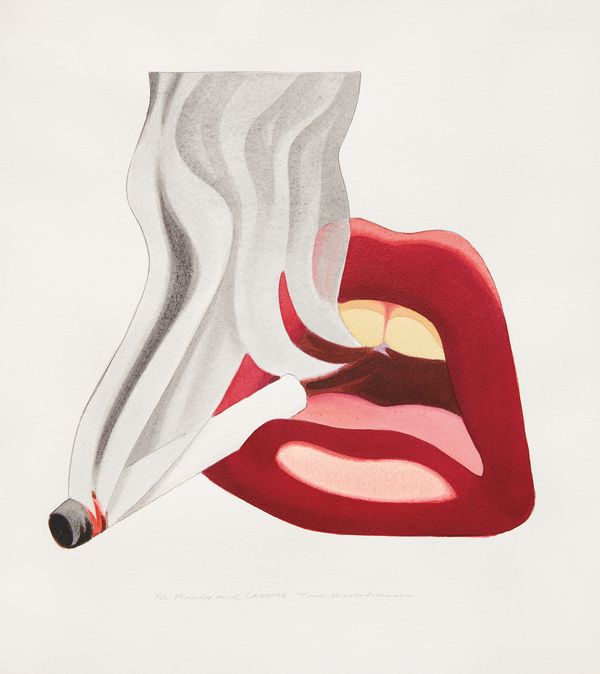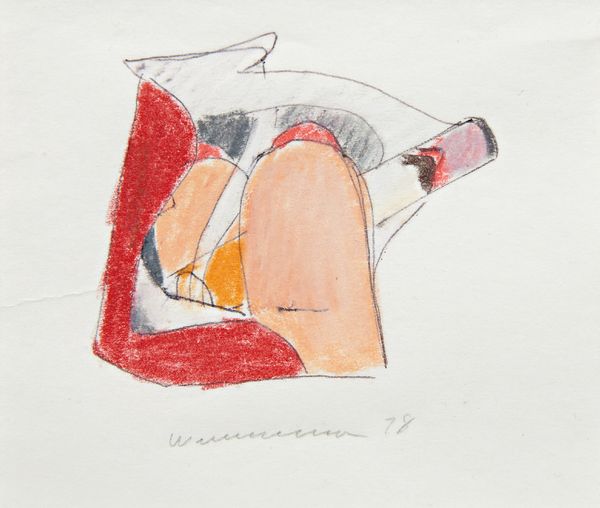Tom Wesselmann From Smoker #7, 1976
From Smoker #7 is not only a depiction of velvety red lips exhaling smoke. It is also a demonstration of Tom Wesselmann's striking virtuosity in manipulating basic and familiar images into abstact and unsettling ones. In the Smokers series, developed from the late '60s as an outgrowth of the Nudes and continued through to the early '70s, Wesselmann shifts his focus on to one specific part of the woman's body, thus emphasizing the element of fetichism present in his oeuvre since the earlier works.
The image the viewer is confronted with is one of an undeniable intimate sensuality. The forms are so clear, bold in their contrasting colours and so vividly realistic that it looks like the ashy end of the dangling cigarette could drop at any moment. Nevertheless, by representing a disembodied mouth, Wesselmann objectifies the woman and abstracts the image of her to a completely anonymous and remote one, offering us yet another symbol for the modern consumeristic age. Peculiarly enough, despite this intention of escaping the reality and realism, in drawing and tackling the smokers Wesselmann took his cue from photography — in particular from photographs of his friend Daniele smoking.
From our 20th Century & Contemporary Art Day Sale in November 2015 in New York: Wesselmann's pen and colored pencil Study for Smoker #27, 1978
As a former cartoonist for men's magazines, Tom Wesselmann's main interest thoughout his career was not to draw attention to the subject but "to make figurative art as exciting as abstract art." Wesselmann reintroduces the nude in art. Yet he overloads it with a blatant eroticism whereby the artist reduces the female sitter to her elementary components and hence is able to concentrate on the formal inner qualities of the image.
As this work from our New Now sale brilliantly attests, Wesselmann's ideal female form is a post-Abstract Expressionist's one combined with the visual power of Pop constantly accompanied by an ironic guiding thread.

